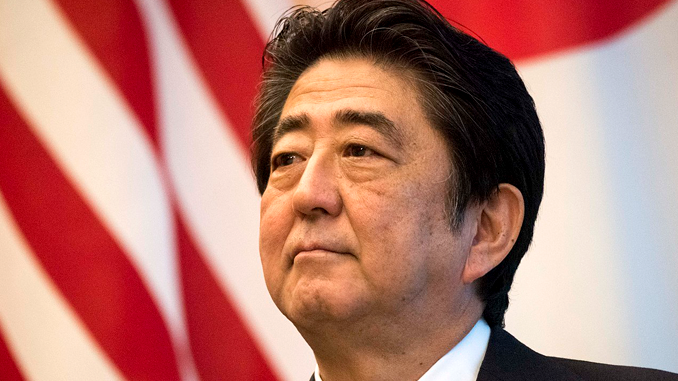
In the midst of the spiraling tensions between South Korea and Japan (more on which to come), the United States announced on Monday their dissatisfaction with both the speed and the format of their trade talks with Japan. They also delivered an unsubtle implied threat to again raise tariffs against the key Asian ally.
In an interview with the Asahi Shimbun, U.S. Ambassador William Hagerty explained the American position on trade with Japan.
Q: The Japanese government emphasized that “TAG” is totally different from an FTA (free trade agreement). From your perspective, from the U.S. perspective, what are the differences between TAG and FTA?
Asahi Shumbun
A: Again, we don’t use the term “TAG.” It’s not consistent with our understanding, so I want to be clear about that. Our goal is to have a trade agreement, again, that is no worse than any other terms that Japan has, with other countries. We already have agreements in place with six of the original TPP countries.
When Japan is added to that, that comprises about 90 percent of the total trade volume originally intended.
As with most diplomatic efforts, the differences seem small but may have large consequences. The English version of the agreement, as the Ambassador stressed earlier in the interview, is “”a trade agreement on goods, as well as other key areas, including services, that can produce early achievements.” Because it added “including services”, the United States is presenting the agreement negotiations as being a country-by-country alternative to the Trans-Pacific Partnership.
Japan, on the other hand, views it as a “TAG”, a Trade Agreement on Goods. Whether some services are included or not, the thrust of the agreement is a traditional point-by-point negotiation for tariff levels, which is completely inconsistent with a free trade agreement. As Japan has recently entered into the Comprehensive and Progressive Agreement for Trans-Pacific Partnership, there is now a modified free trade agreement between Japan and ten other countries including Canada, Australia and Mexico. As a tariff-based agreement is more restrictive than a free trade agreement, Japan is not equating the two.
“I’ll say this: There was a great deal of frustration, trying to get together with our counterparts in Japan. As I mentioned in 2016, the TPP became politically impossible in the United States. In April of 2017, Vice President (Mike) Pence and Wilbur Ross, our commerce secretary, visited Japan and raised the need to enter into trade negotiations. “We need a trade deal.” No response.”
William Hagerty
Here, the Ambassador explains that the TPP was jettisoned not because of the terms of the deal but because it became “politically impossible”. In response they pressured the Japanese, who were at the time President Trump’s strongest international supporters (Israel took that position the next month, after the announced embassy move), to undermine a market-friendly free trade agreement Japan was negotiating with other countries.
“Section 232 has been brought out, for national security reasons. The president said that economic security and national security are the same, and he wants to achieve reciprocity. He wants to have a trade agreement with our major partners that is no less favorable than any other country, and so that’s the goal. We’re on path, I think, to achieve that goal, and I hope we’re able to do that in a timely fashion, and my expectation is that we’ll be negotiating entirely in good faith. So, I hope that the 232 never becomes necessary.”
William Hagerty
“No less favorable” means that the President wants to receive all of the same free-trade benefits that Japan grants to the countries with which it has entered into the CPATPP. In response, he wants to assign tariff levels to Japanese goods coming into the United States. If the Japanese do not accept this position and negotiate toward it quickly and in good faith, they will be penalized with heightened tariffs.
It is worth noting that, as explained by Marketwatch, for all of the concerns about the amount of debt that is held by China ($1.18 trillion), Japan holds nearly as much ($1.05 trillion). Many economic threats which can be mustered by China are equally available to Japan, should they decide to implement them.
